What is Tele-Neurology, and How Can It Transform Your Hospital?
 Your hospital-ready guide to expanding neurology coverage
Your hospital-ready guide to expanding neurology coverage
October 9, 2025
If you’ve explored our other blogs, you may have learned about tele-stroke, a sub-specialty of tele-neurology, helps hospitals quickly provide acute stroke care at times when every second is crucial.
Today, we’ll be stepping back to explore the umbrella itself: tele-neurology, which encompasses a wide range of neurological conditions beyond strokes, including epilepsy, Parkinson’s, dementia and brain tumors.
What is Tele-neurology?
Tele-neurology is practiced when a provider cannot be physically present with a patient at a certain time or place. With video conferencing, tele-neurology leverages real-time virtual consultations to bring neurological expertise to any clinical setting.
It supports a broad spectrum of conditions, including seizures, migraines and headaches, dementia, epilepsy and multiple sclerosis. Teleneurologists are extremely helpful in resolving cases due to:
- Delayed treatment
- Prohibitive travel times for neurologists
- Poor access to a neurologist due to geographic location
- Long wait times to see an in-house neurologist
Due to relying heavily on detailed patient history and accurate interpretations, tele-neurology was slower to enter the telemedicine space compared to other specialties. Now, however, it can function seamlessly within existing hospital workflows.
How Tele-neurology Works
Similar to other telemedicine services, tele-neurology is comprised of highly trained specialists available 24/7 to support with neurological evaluations and treatment planning. These providers also collaborate directly with on-site doctors and nurses to improve patient outcomes.
Their efforts accelerate clinical decisions without overwhelming on-site staff. Tele-neurologists follow protocols that are SEP-1- and CMS-aligned, helping hospitals meet national benchmarks, improve Leapfrog scores and face audits with confidence.
Apart from onboarding tele-neurologists, a hospital’s access to strong and reliable technology can also make or break the success of this service.
Tech stacks, like Intercept Telehealth’s, support real-time video consultations and easily integrate into your existing communication systems with minimal training and interruptions.
How Tele-neurology Differs from Its Sub-Specialties
As mentioned earlier, tele-neurology is the broad term for the virtual delivery of neurological care, while its subspecialties are specific to certain conditions. Subspecialties in tele-neurology can include:
- Tele-stroke: This well-known specialty provides 24/7 access to stroke-specializing neurologists for emergency evaluations and acute stroke care. Learn more here.
- Tele-epilepsy: Specialists use telemedicine to provide care for epilepsy patients and oversee electroencephalogram (EEG) monitoring.
- Tele-movement disorders: Virtual care is offered to patients with conditions such as Parkinson’s Disease, Tourette’s Syndrome and Huntington’s Disease, all of which are neurological conditions that affect voluntary and non-voluntary movements.
- Tele-headache: Experts can evaluate chronic headaches or migraines.
Tele-neurology can address both routine and urgent neurological issues and provide follow-ups and general appointments. Subspecialties often focus more on time-sensitive cases where immediate assessments are needed.
Key Advantages of Tele-neurology
Implementing a comprehensive tele-neurology service comes with many benefits:
- Faster time-to-treatment across all neurologic emergencies
- Reduced paramedic and transfer burdens on rural and community hospitals
- Improved staff satisfaction and retention thanks to the sharing of on-call responsibilities
- Enhanced compliance with regulatory benchmarks and audit readiness
- Greater patient and family engagement and education through consistent updates and follow-up care
These advantages translate into better outcomes, stronger community trust and lower operational costs.
Implementing a Turnkey Solution
Your telemedicine service provider should offer seamless and straightforward adoption processes. After selecting a service for your hospital, you’ll undergo a few steps to maximize the short- and long-term success of your tele-neurology program:
- Discovery
A candid conversation discussing your hospital’s and staff’s needs will unveil the building blocks needed for a strong transition. - Training and implementation
With minimal disruption to staff and time, your team will begin learning the necessary training and protocols to enhance their workflows. - Ongoing Support
Continuous support from remote neurologists builds a strong connection between them and the on-site team. - Outcome Assessment
Regular performance reviews with established metrics are critical to understanding what is working and where there might be areas for improvement.
What to Keep in Mind Before Implementing
Unique to tele-neurology are a few factors you must consider before choosing the right fit for your hospital.
- Due to the complexity of neurology cases, remote neurologists may demand higher video resolution to get the best angle to assess motor function or cognitive changes.
- Speed and accuracy are everything in these cases, so hospitals must design workflows that accommodate both emergency and scheduled consults.
- One of the biggest advantages of telemedicine is that a patient can get specialist access even being halfway across the country. You want to work with a tele-neurology provider who can navigate multi-state licensing and credentialing on your behalf so that members of your own team aren’t forced to carry this administrative burden.
Begin Today
Tele-neurology represents a fundamental change in neurological care delivery, extending expert support across state borders to continue improving patient outcomes and staff well-being. At Intercept Telehealth, we commit to being a partner that helps hospitals elevate care quality, reduce costs and strengthen community ties.
Ready to expand your neurology capabilities? Contact us today to schedule a discovery session and explore how our tele-neurology program can transform patient care at your facility.



